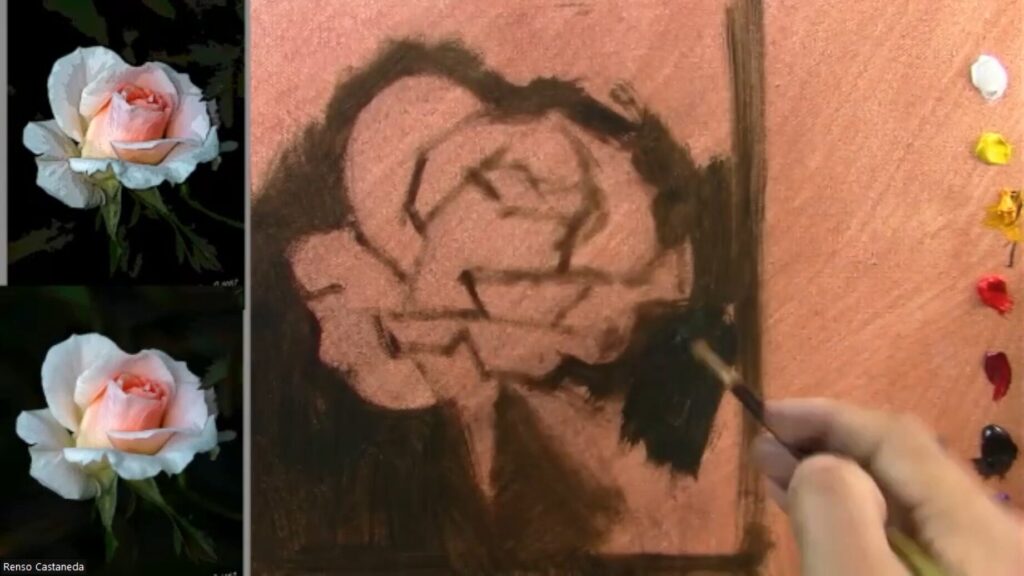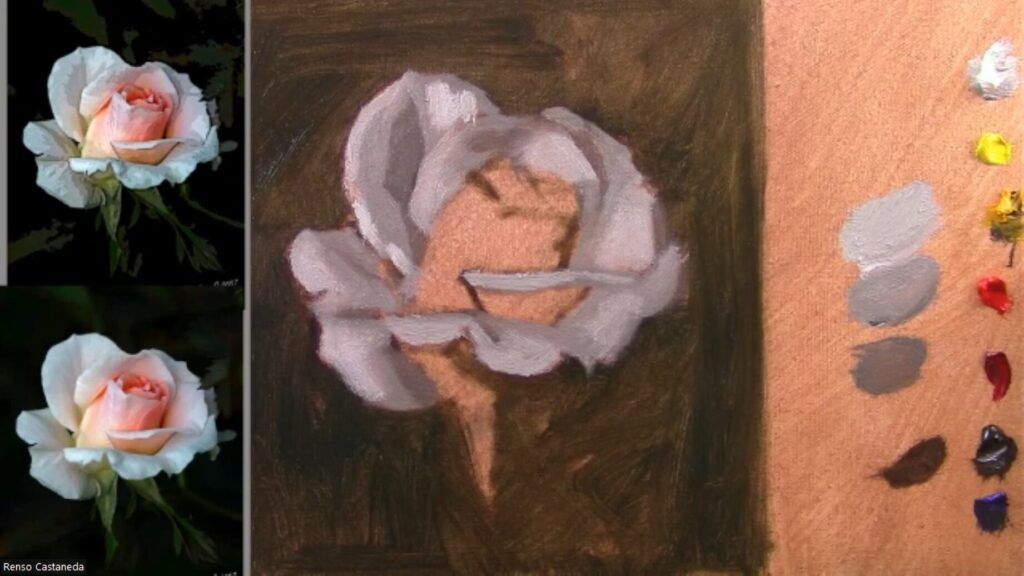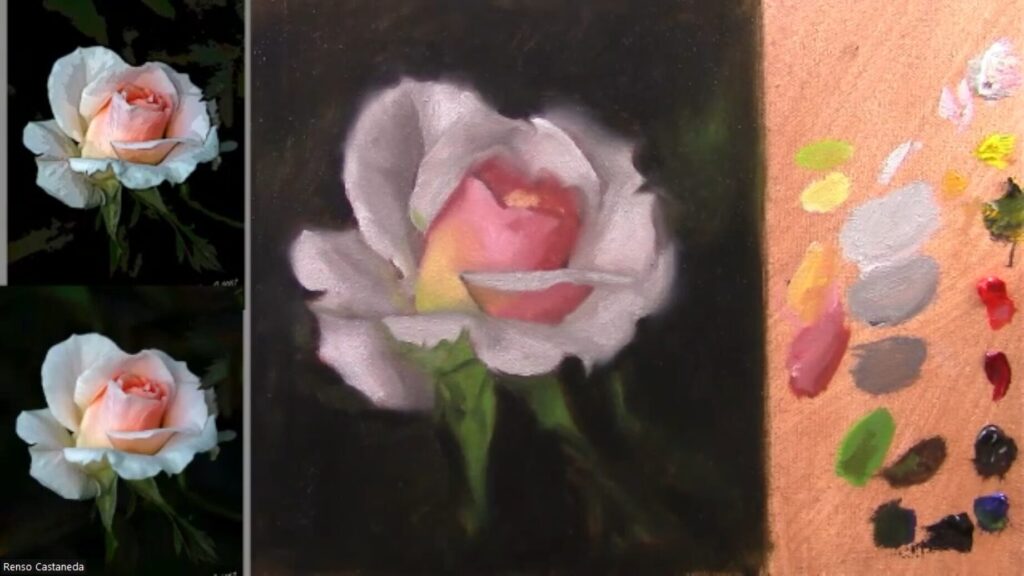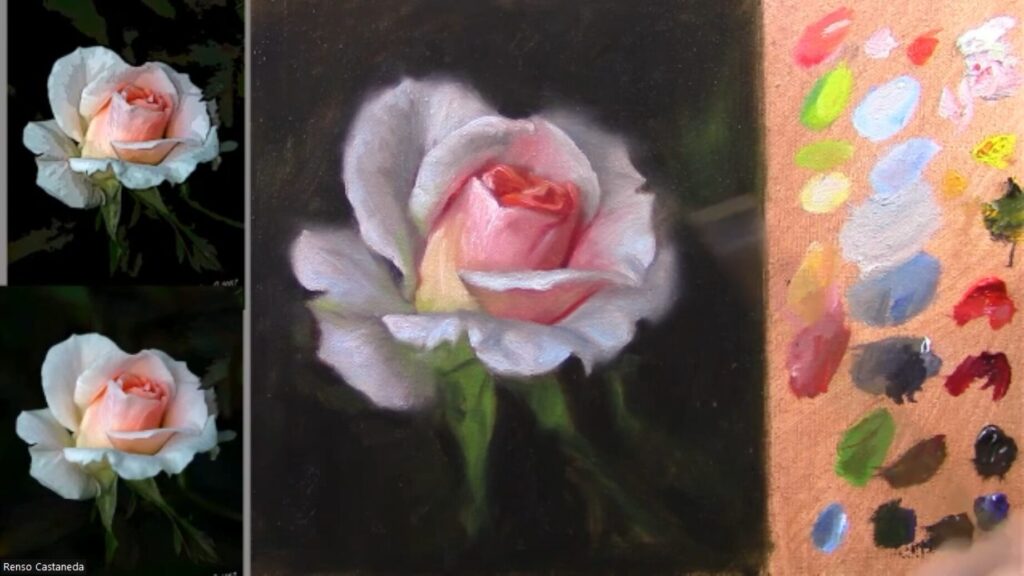I stand before the blank canvas, charcoal in hand, feeling the quiet anticipation of creation. The white rose in my reference photo seems simple at first glance—just layers of pale petals—but I know better. There’s depth here, softness, a delicate interplay of light that I must capture.
First Marks: Finding the Rose’s Soul
My charcoal glides across the surface, not drawing petals yet, but seeking the rose’s essence—the gentle curve of its outer shape, the way the center petals spiral inward. I think in broad strokes first, simplifying the complexity into overlapping forms. Negative spaces between petals become just as important as the petals themselves. This isn’t about precision; it’s about feeling the rhythm of the rose.

The Dark Embrace: Painting the Background
Before the rose can shine, it needs contrast. I mix a deep, muted green—Raw Umber and Cobalt Blue with just a whisper of Chrome Yellow—and lay it in with loose strokes. The dark cradles the space where the rose will live, making its eventual lightness glow by comparison. There’s something meditative in this step, like preparing the stage before the performance.

Whispers of Shadow: Building Form
Now, the rose itself. I resist the urge to dive into pure white. Instead, I mix a series of grays—Raw Umber and White in varying degrees—to map out the shadows. The darkest grays nestle in the deepest folds, where petals curl away from the light. Mid-tones soften the transitions. Already, the rose begins to breathe, its petals lifting from the canvas.

The Magic of Edges: Where the Rose Comes Alive
Here’s where the real alchemy happens. With a soft brush, I blur some edges, letting petals melt into the background as if veiled in morning mist. Others I sharpen—just a few, where the light catches a petal’s rim. These contrasts create depth, pulling some petals forward, pushing others back. I think of Sargent, of Velázquez, how they used edges to suggest life rather than imprison it.
Breathing Color into White
White is never just white. In the shadows, I tease in hints of Alizarin Crimson, muted and subtle. Near the center, where the light warms the petals, I add the faintest trace of Chrome Yellow to my Titanium White. At the base, a suggestion of green reflects from the leaves. These whispers of color make the rose luminous, alive.

Final Touches: The Illusion of Light
Stepping back, I squint. Does the rose feel real? Does it have weight, dimension? I add a few bold strokes—thick paint where the light kisses the petals most fiercely, a sharp edge here, a lost edge there. The painting hums now, no longer just pigment on canvas but something that seems to exist in three dimensions, bathed in invisible light.

The Lesson in the Petals
As I clean my brushes, I realize this rose has taught me something. Painting isn’t about copying what’s before me—it’s about understanding how light shapes form, how edges suggest space, how the subtlest shifts in color or value can make the difference between flatness and life. A white rose isn’t just white; it’s a symphony of grays, a dance of soft and sharp, a lesson in seeing deeply.
And tomorrow? Perhaps I’ll paint another. There are always more layers to uncover.

